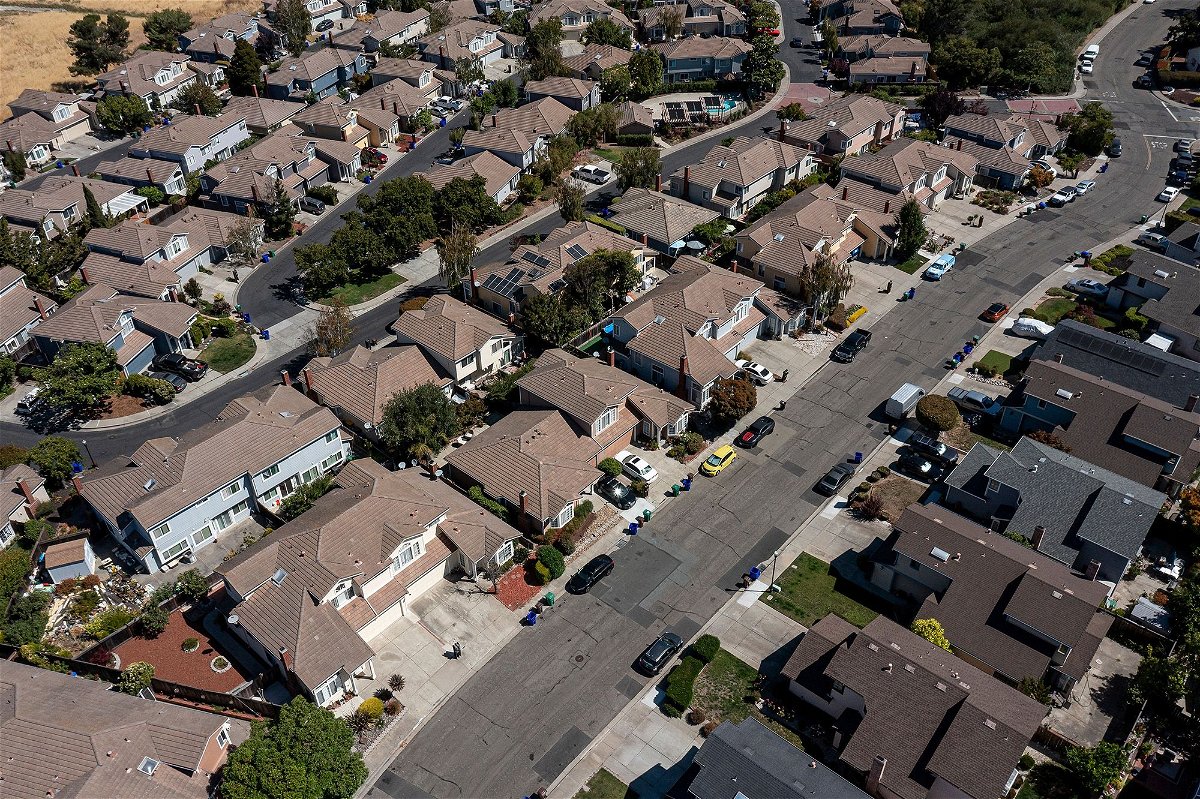US home prices rose in July after 5 months of declines

Home prices are rising again.
By Anna Bahney
Washington, DC (CNN) — US home buyers have a new challenge in addition to mortgage rates above 7%: Prices are rising again, reversing five months of year-over-year declines, according to a National Association of Realtors report released Tuesday.
The median existing home price was $406,700 last month, up 1.9% from a year ago when the median home price was $399,000. It was the highest price for the month of July on record. Prices rose in the Northeast, Midwest and South but were unchanged in the West, the NAR report found.
Prices were pushed up by the stubbornly low inventory of homes on the market — just 1.11 million existing homes were available to buy at the end of July, down 14.6% from a year ago. It was the lowest number of homes for sale on record for the month of July, which is typically one of the busiest months for home buying and selling in the year.
Current homeowners are refusing to sell and are hunkering down with their ultra-low mortgage rates that are at least half the current rates, which are at their highest level in 21 years.
Sales of existing homes — which include single-family homes, townhomes, condominiums and co-ops — dropped below expectations and were down 2.2% from June to July. Annually, sales were down 16.6% from a year ago. It was the third slowest sales pace during this pandemic-related real estate cycle, following December of last year and January of this year when sales were hit by rates that climbed over 7%.
“Two factors are driving current sales activity — inventory availability and mortgage rates,” said NAR chief economist Lawrence Yun. “Unfortunately, both have been unfavorable to buyers.”
Mortgage rates have remained volatile and have racheted higher since mid July, with average rates for a 30-year fixed rate mortgage topping 7% last week, according to Freddie Mac. That has made moving much harder for people.
“Life cycles will always keep the real estate market going to a certain level,” said Melissa Cohn, regional vice president at William Raveis Mortgage, adding that people will need to move because of marriage, a new baby, divorce or death.
However, “No one wants to pay more on a house and pay twice as much on a mortgage,” she said.
Prices are high because of low inventory
Typically with supply and demand when the cost of something goes up, demand will go down and the supply will grow. But that isn’t playing out in the housing market. That’s because homeowners are making the decision not to sell their homes, cutting off supply and pushing prices even higher.
Over a third of the homes sold in July – 35% – went for over the asking price. With so many homes going over asking, buyers are likely contending with bidding wars on the handful of homes that are coming to market.
“It is a heated market in a sense,” said Yun. “Home sales are down. But for homeowners they are not feeling any pain, housing wealth is continuing to rise. Regarding prices, it is like the housing recession is already over.”
While the market has registered lower sales across all price categories, at the upper end the impact has been slightly less. That’s where the inventory is, said Yun.
Sales of homes priced from $250,000 to $500,000 were down 15.5% from a year ago, while homes priced from $750,000 to $1 million were down only 11% and homes over $1 million were down by 7%.
“There is virtually no inventory at the lower price points,” said Yun.
Buyers at the upper end of the market are also a bit more insulated from higher mortgage rates.
Over a quarter of all sales in July were all cash, up from 24% a year ago.
Many are current homeowners able to use current equity to reduce the size of their next mortgage and soften the blow of higher rates. Others are making geographic moves from a higher cost area to a lower cost area, like from New York to North Carolina or California to Idaho, and are able to use money they earn from selling a pricy home for one that costs less.
Against all odds first time buyers, who are usually the most vulnerable to high mortgage rates and price fluctuations, remain in the market. Thirty percent of the purchases in July were by people who have never previously owned a home. That was up from 27% last month and 29% a year ago, indicating the demand to own a home is still strong.
But the headwinds to buying in this market are significant, and not expected to improve soon.
Housing affordability is worsening
As weak as the July sales figures were, with mortgage rates rising in August, a bad situation for sales is likely to get worse, said Robert Frick, corporate economist with Navy Federal Credit Union.
There is little to indicate much movement in the situation in the near term, he said.
Current elevated mortgage rates are the result of higher bond yields rising on the strength of the economy and are expected to stay higher for months as investors wait to see if the Federal Reserve will continue with rate hikes at its remaining three meetings this year.
“It looks a little bit scary with regard to the 7% mortgage rates,” said Yun. “We are watching to see whether it will go all the way to 8% or if it will retreat back down.”
As long as rates are elevated, inventory will stay low and prices will stay elevated, Yun said, making affordability a challenge for most home buyers.
The-CNN-Wire
™ & © 2023 Cable News Network, Inc., a Warner Bros. Discovery Company. All rights reserved.